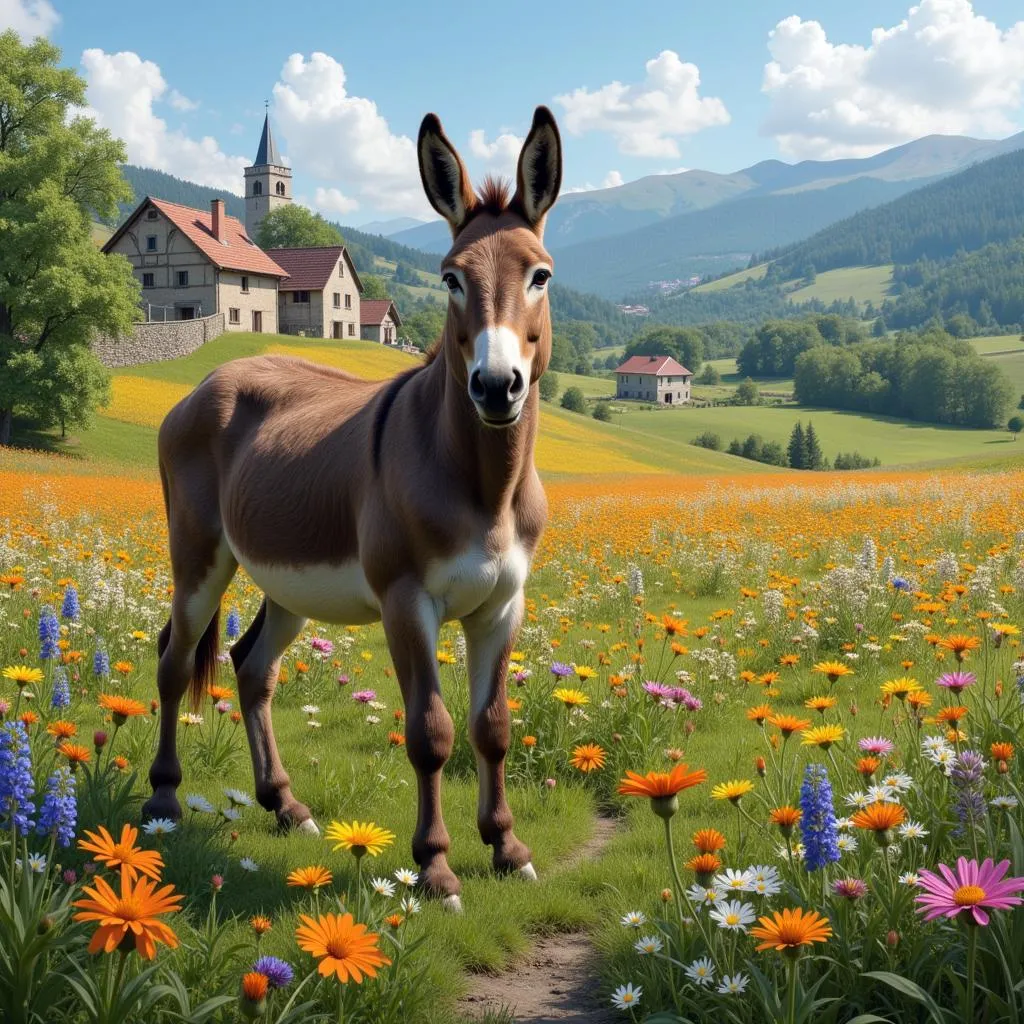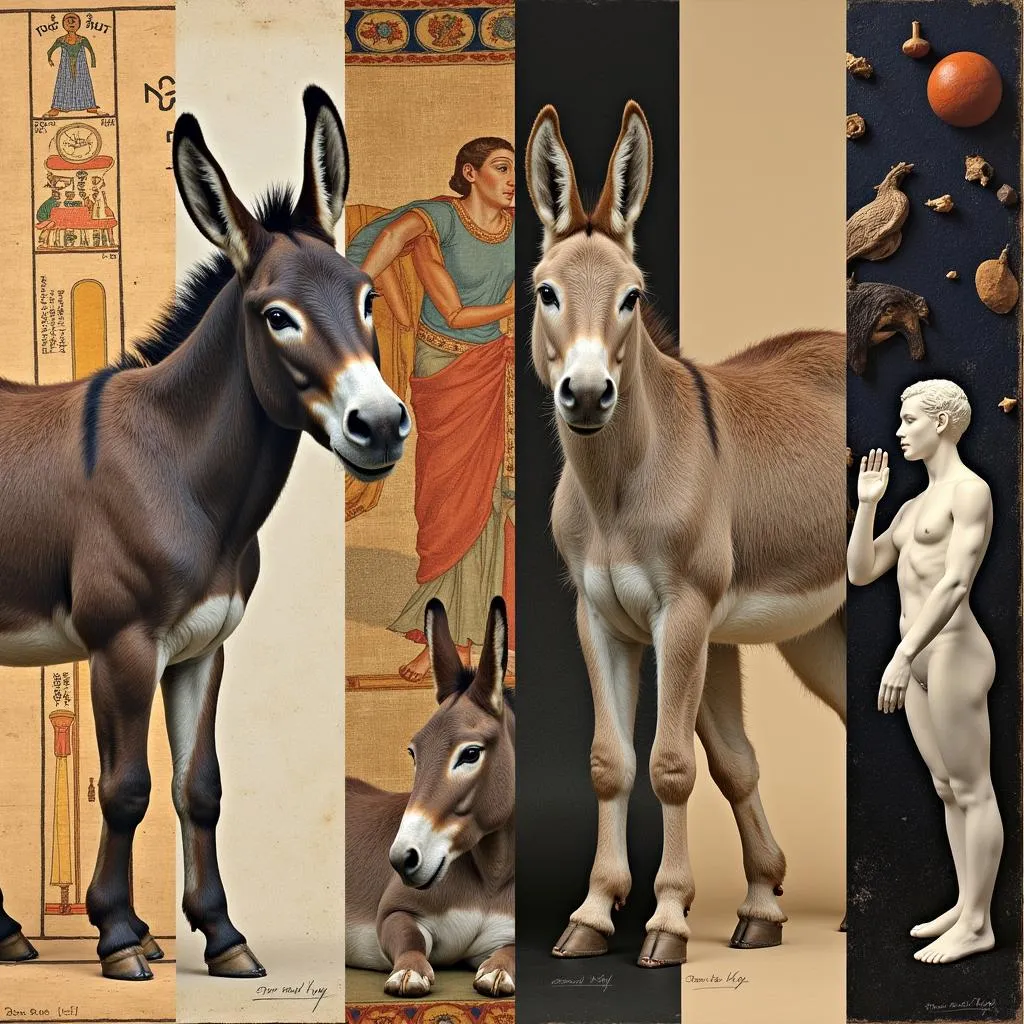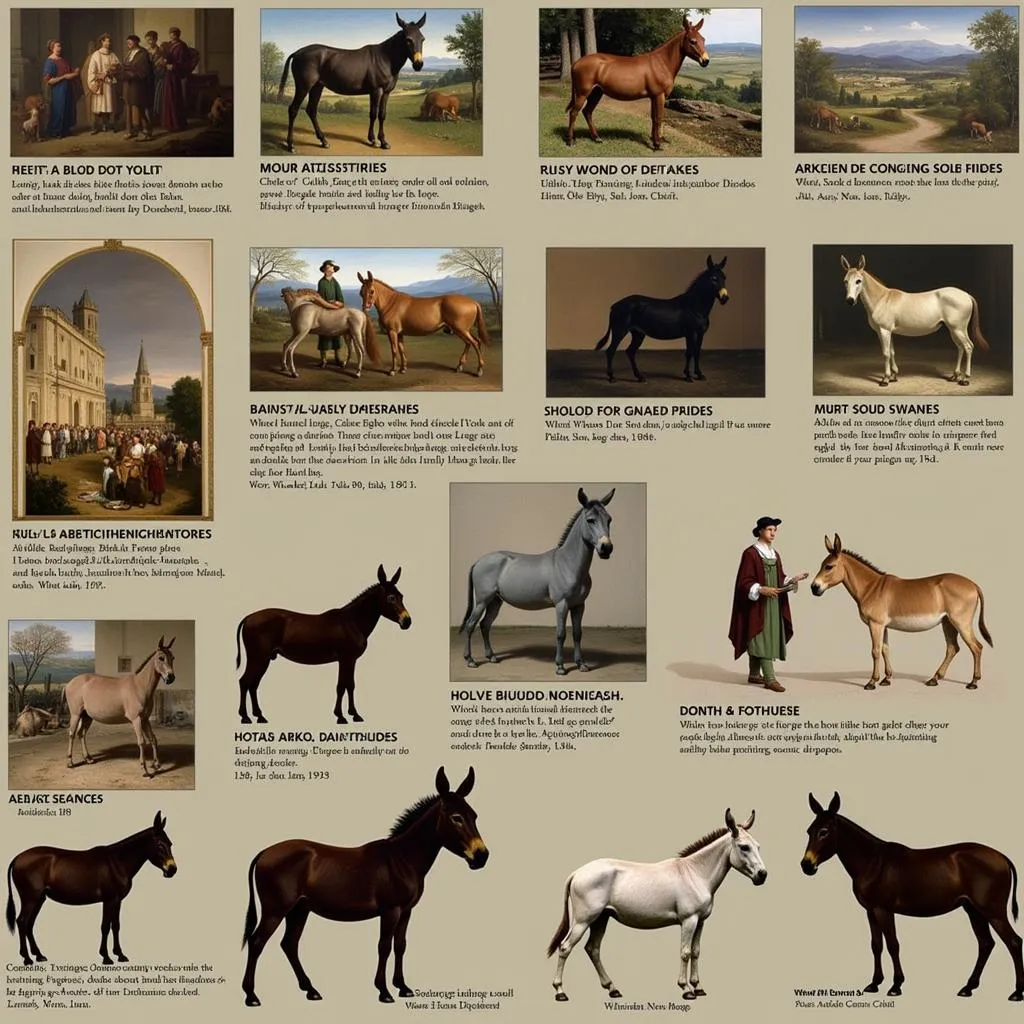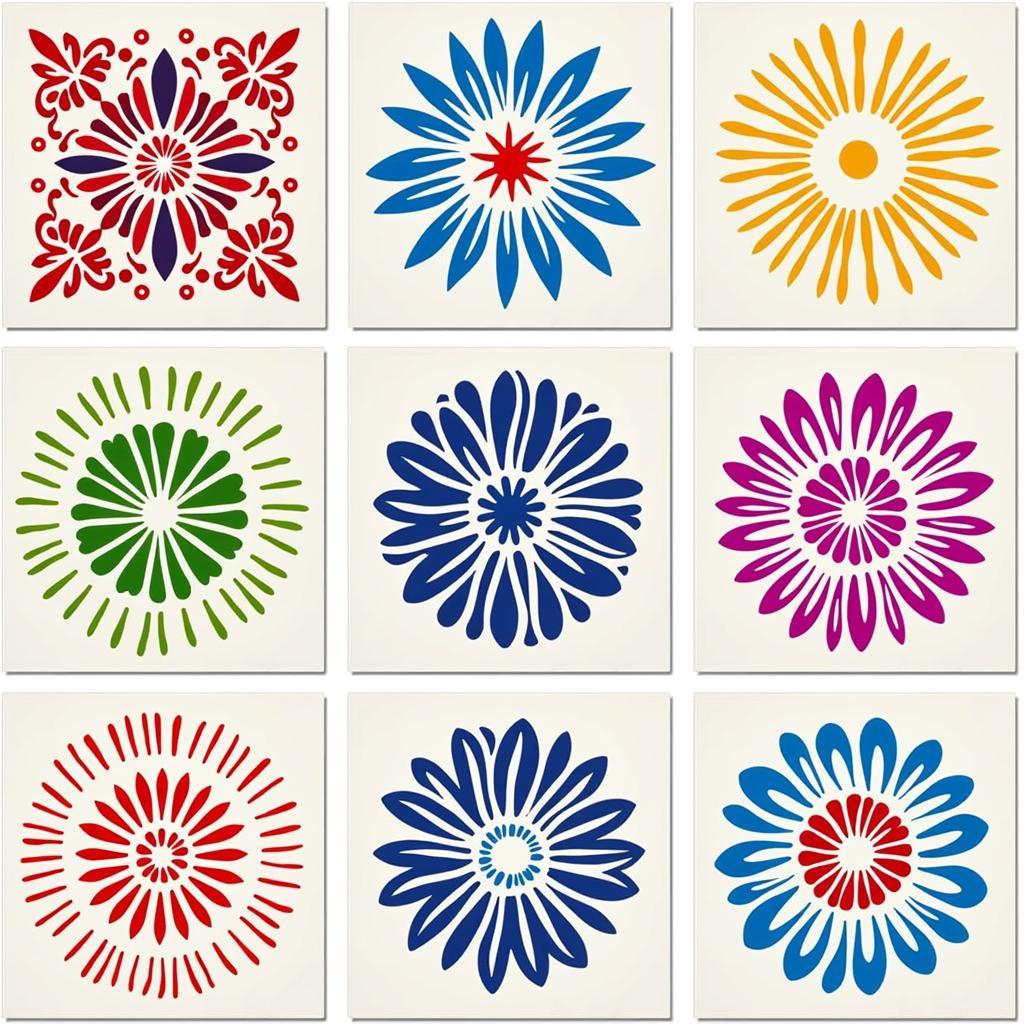Donkeys in Art: A Humble Muse Through the Ages
From the dawn of civilization, donkeys have been steadfast companions to humanity, their images etched not just into our daily lives, but onto the canvases and sculptures of artistic expression. While often perceived as work animals, Donkeys In Art transcend this utilitarian view, embodying a spectrum of symbolism and artistic interpretation across cultures and eras.
The Donkey’s Symbolic Significance in Art
 The Donkey: A Familiar Beast in European Painting
The Donkey: A Familiar Beast in European Painting
The humble donkey, far from being a mere beast of burden, has served as a powerful symbol in art history. In the Western world, its association with Christ’s entry into Jerusalem imbued it with a sense of humility and peace. Renaissance artists frequently depicted the donkey in biblical scenes, further solidifying this religious symbolism.
However, the donkey’s symbolic meaning extends beyond the realm of the sacred. In some cultures, it represents fertility and prosperity, while in others, it embodies patience and resilience. This rich tapestry of meaning allows artists to utilize the donkey as a vehicle for conveying complex emotions and narratives.
The Donkey in Different Artistic Movements
Across artistic movements, the donkey has maintained a consistent presence, albeit with stylistic and thematic variations. In ancient Egyptian art, for instance, donkeys appear in funerary contexts, signifying safe passage into the afterlife. Fast forward to the Middle Ages, and we find them adorning illuminated manuscripts, their stoic forms providing a stark contrast to the ornate calligraphy surrounding them.
 Transformations of the Donkey: From Ancient to Modern Art
Transformations of the Donkey: From Ancient to Modern Art
Modern art, too, has embraced the donkey. From Picasso’s cubist interpretations to Chagall’s whimsical depictions, the donkey continues to captivate artists with its unique form and symbolic potential. These modern interpretations often challenge traditional notions of beauty and artistic representation, highlighting the versatility of the donkey as a subject matter.
Famous Donkeys in Art History
Several artworks stand as testaments to the enduring legacy of donkeys in art. One notable example is Albrecht Dürer’s “The Flight into Egypt” (1504), where the donkey assumes a central role, carrying the Holy Family to safety. The animal’s strength and resilience are palpable, reflecting the perilous journey undertaken.
Another iconic artwork featuring a donkey is Pablo Picasso’s “Guernica” (1937). In this powerful anti-war masterpiece, the anguished cry of the donkey becomes a poignant symbol of the suffering inflicted upon innocent creatures during wartime.
 Iconic Donkey Paintings Throughout History
Iconic Donkey Paintings Throughout History
Conclusion
From ancient cave paintings to contemporary installations, the donkey has left an undeniable hoofprint on the world of art. More than just a work animal, the donkey has served as a muse, inspiring artists to explore themes of humility, resilience, peace, and suffering. As we continue to unravel the layers of meaning embedded within these artistic representations, we gain a deeper appreciation for the enduring relationship between humanity and this unassuming yet profound creature.


